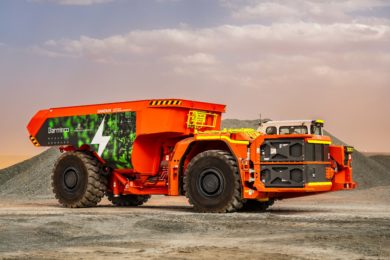AngloGold Ashanti (AGA) recently released its 2023 Sustainability Report, which includes a discussion of its pathway to net zero Scope 1 and 2 GHG emissions. The gold miner has a stated objective of reducing Scope 1 and 2 greenhouse gas emissions by 30% by 2030 from a 2021 baseline as a medium term target enroute to net zero Scope 1 and 2 GHG emissions by 2050.
The company states: “As we continue our journey towards reducing carbon emissions and building a greener planet, we are leveraging global collaboration to create a sustainable and resilient world for generations to come. We are therefore committed to work with our sites to target areas of potential reduction to achieve our maximum potential.”
Starting with Australia, at Tropicana, AGA signed an agreement with Pacific Energy to construct a renewable wind and solar project, while continuing to operate the combined renewables-gas power station under a 10-year build-own-operate contract. The renewables integration is expected to almost eliminate Tropicana’s diesel consumption for power generation and reduce gas consumption for power generation by approximately 50%, cutting carbon emissions by more than 65,000 t/y on average over the life of this agreement. At Sunrise Dam, a three-party agreement between AngloGold Ashanti, Barminco and Sandvik was reached to trial the world’s largest battery-electric underground mining truck – the TH665B – at Sunrise Dam. This technology will produce zero emissions and generate 80% less heat.
In Tanzania, work at Geita to switch over to the national utility is progressing toward completion in 2024. AGA says the project team is working closely with the national utility to ensure alignment of work streams ahead of the switch over. The Statcom containers, transformers and heat exchangers were installed on site, a key milestone for 2023. To increase the stability of the national grid (largely hydro and natural gas powered) during the dry season, AGA has factored in the need to supplement grid electricity and has made provision for additional diesel to power its gensets in 2024.
In Ghana AGA is currently advancing a 100 MW solar plant in conjunction with the Volta River Authority, our current service provider. Key priorities include agreeing power tariffs that will be incorporated into a 10-year Power Purchase Agreement and definition of the methodologies to be used in Carbon Credit Certificates.
In Guinea in 2023 AGA identified a preferred 150 ha location for a planned 40 MW solar project. A multi-disciplinary team is currently identifying the most suitable candidate to build, own and operate the project. In 2024, it will start environmental studies and applications for the required government permits.
In Brazil, by replacing existing diesel power LHDs and light vehicles with battery electric equivalents (BEVs) at the Cuiaba mine, AGA will reduce heat load and diesel particulate matter. BEVs also serve to reduce ventilation required to cool the underground mine. A trial to test the viability of an electric loader – an Epiroc Scooptram ST14 SG – began in December and is set to last 18 months. The results of this trial will be shared across the group to build a solid knowledge base for the further roll out of BEVs.
In Argentina, AGS is in the process of completing a strategic asset review to maximise the long-term value of CVSA. This analysis will consider the additional resources and potential for regional exploration opportunities to increase the life of mine at CVSA. The outcome of this study will inform the viability of installing wind turbines at the site.
In the US in 2024 AGA will expand the scope of the Expanded Silicon project pre-feasibility study to include trade-off studies to consider various clean energy solutions, including trolley assist versus normal haulage, solar power versus grid to generate power as well as Railveyor options.
Finally, in Colombia, it says the Quebradona project presents a unique opportunity to source 100% renewable electricity from the national grid and use it to electrify both the underground mining activities and TSF transport. The Colombia project team has recently completed a small-scale test to prove the viability and benefits of green hydrogen. If successful, this could be leveraged to provide power to much larger trucks for the site’s logistics needs.










